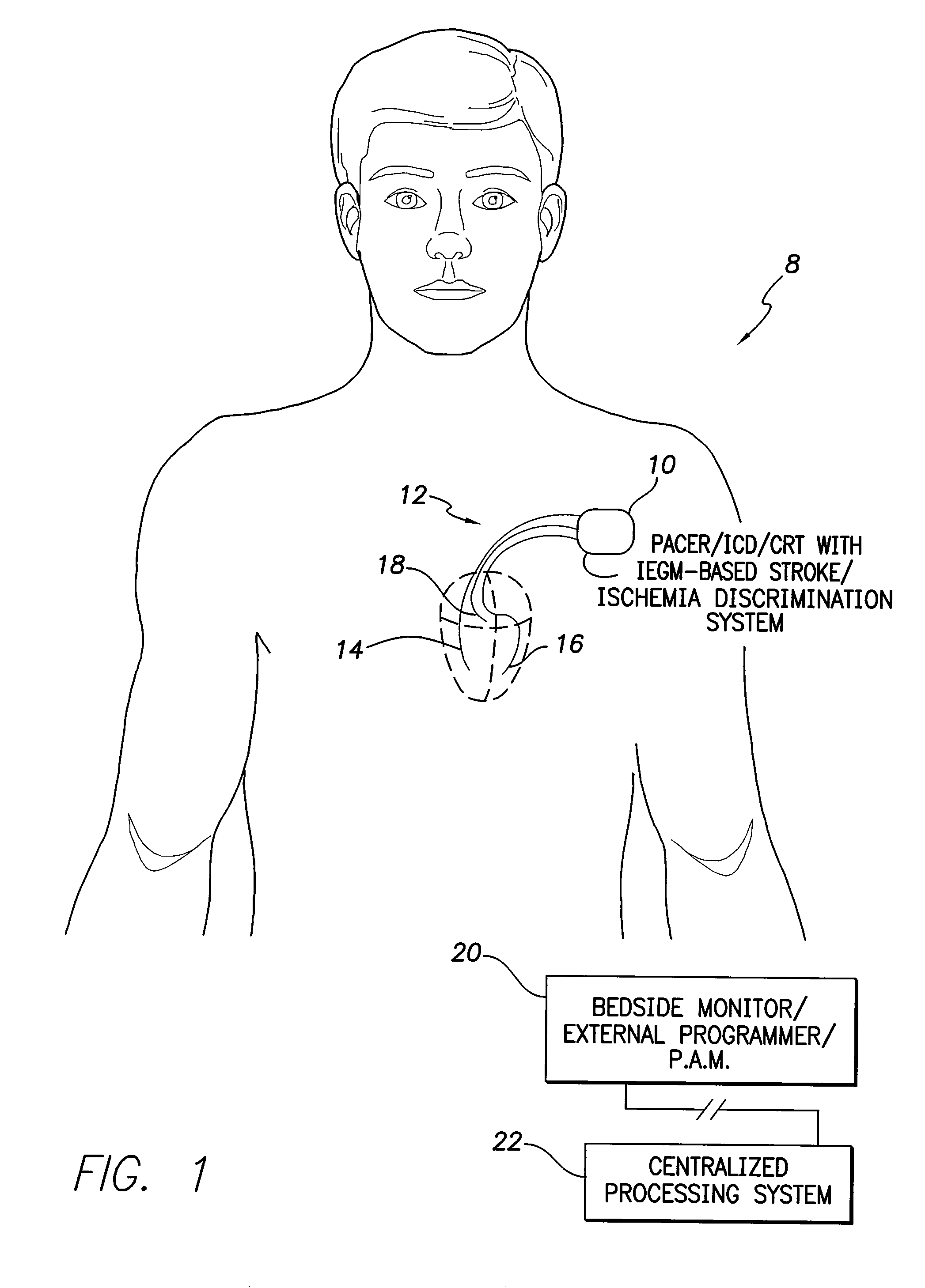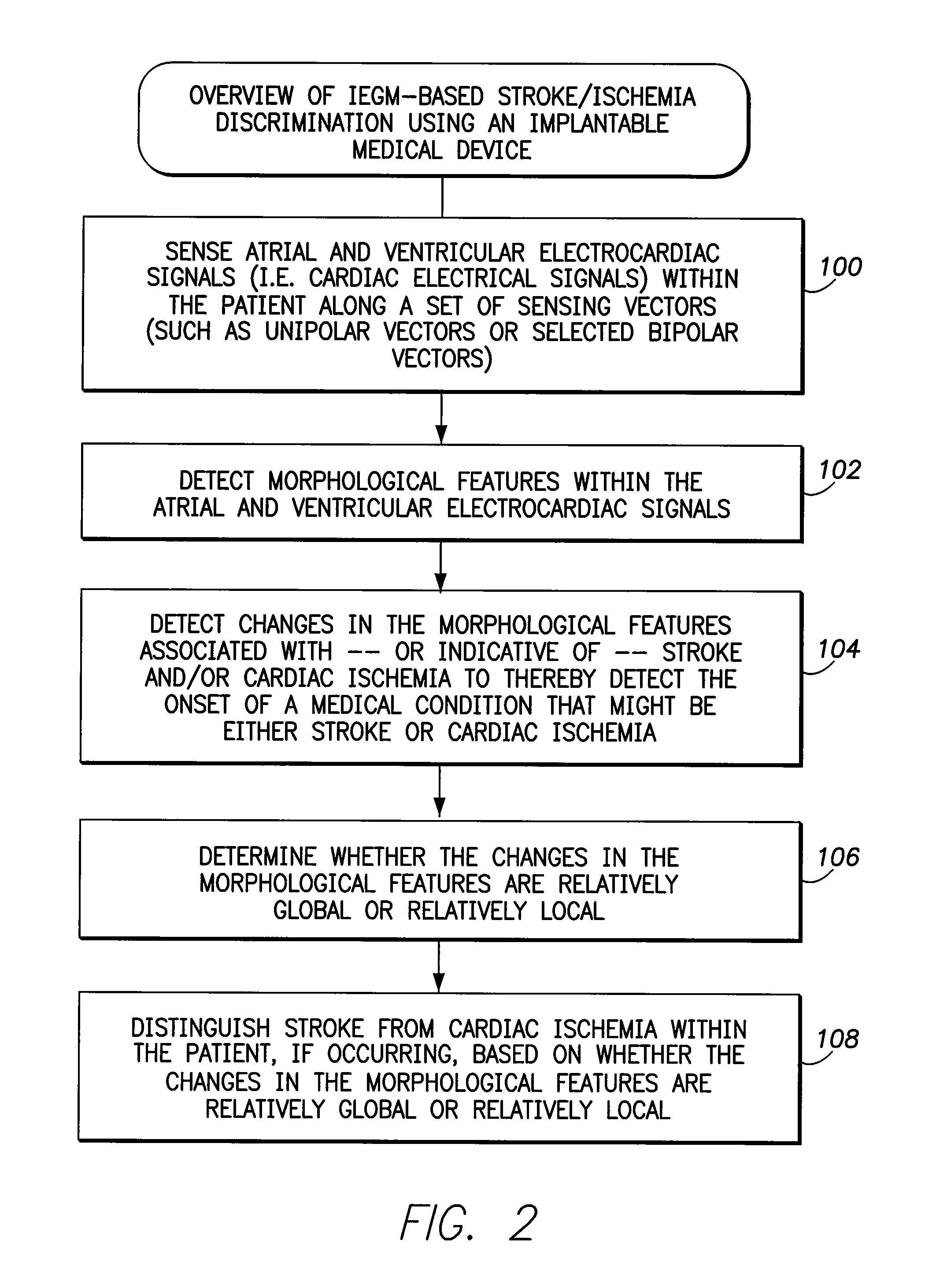Systems and methods for use by implantable medical devices for detecting and discriminating stroke and cardiac ischemia using electrocardiac signals
a technology of electrocardiac signal and implantable medical device, which is applied in the direction of bioelectric signal measurement, medical science, diagnostics, etc., can solve the problems of cardiac ischemia not sufficiently serious to cause actual permanent injury to heart tissue, cardiac autonomic tone alterations, and cardiac muscle deterioration
- Summary
- Abstract
- Description
- Claims
- Application Information
AI Technical Summary
Benefits of technology
Problems solved by technology
Method used
Image
Examples
Embodiment Construction
[0031]The following description includes the best mode presently contemplated for practicing the invention. This description is not to be taken in a limiting sense but is made merely to describe general principles of the invention. The scope of the invention should be ascertained with reference to the issued claims. In the description of the invention that follows, like numerals or reference designators are used to refer to like parts or elements throughout.
Overview of Unipolar IEGM-based Stroke / Ischemia Discrimination System
[0032]FIG. 1 illustrates an implantable medical system 8 having a pacemaker, ICD or CRT 10 equipped with an IEGM-based stroke / ischemia discrimination system for detecting and distinguishing stroke and cardiac ischemia within the patient in which the system is implanted based on various electrocardiac signals sensed via a set of leads 12. In this example, three leads are provided: an RV lead 14, an LV / CS lead 16 and an RA lead 18 from which various atrial and ven...
PUM
 Login to View More
Login to View More Abstract
Description
Claims
Application Information
 Login to View More
Login to View More - R&D
- Intellectual Property
- Life Sciences
- Materials
- Tech Scout
- Unparalleled Data Quality
- Higher Quality Content
- 60% Fewer Hallucinations
Browse by: Latest US Patents, China's latest patents, Technical Efficacy Thesaurus, Application Domain, Technology Topic, Popular Technical Reports.
© 2025 PatSnap. All rights reserved.Legal|Privacy policy|Modern Slavery Act Transparency Statement|Sitemap|About US| Contact US: help@patsnap.com



